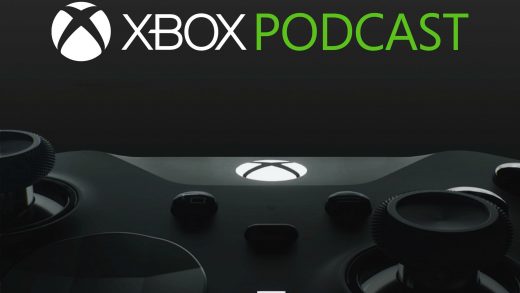
He wāhi tare tēnei pūrongo o tā Puna hinonga hihira-meka, Te Tikanga Katoa – The Whole Truth. E oti i a koe te pānui i te roanga atu o ā mātou hihiratanga-meka ki konei.
This reporting is part of Stuff’s fact-checking project, The Whole Truth. You can read the rest of our fact-checks here.
Read this story in English here.
He aha te raru? | What’s the issue?
Mō te pāpātanga mate pukupuku kiri, me ōna hemonga, kāore he painga i a Aotearoa. Mea ake nei ka puta te ihu o Hine Raumati, ā, kua teitei ake ngā taumata toharite hihi katikati i ēnā o tērā tau, nā reira me whakakapi rānei e mātou ō tātou SPF30 ki te SPF100?
New Zealand holds the unenviable titles of highest melanoma case rates and deaths in the world. With summer on our doorstep, and warnings UV levels are averaging higher than last year, do we need to be trading in our SPF30 for SPF100?
STUFF/123RF/Stuff
The Whole Truth – SPF
Ngā kitenga | What we found
Kia tirohia tuatahitia e tātou ngā āhuatanga o te pani ārai me te SPF.
Let’s first unpack how sunscreen and SPF works.
E rua ngā momo hihi katikati (UV) ka whakaputaina e te rā e pākarukaru nei i te pītau ira (DNA) o te kiri, e pāngia ai e te mate pukupuku kiri. E taea ana e ngā hihi UVB te pākarukaru motika i te pītau ira, ā, ko tā te UVA he pākarukaru ā-ōhiki, he tāmi pea i te awhikiri pahara.
The sun produces two types of ultraviolet (UV) radiation that can damage DNA in skin cells and lead to skin cancer. UVB rays cause direct DNA damage, and UVA causes oxidation damage and immunosuppression. Both cause sunburn, and contribute to developing skin cancer, tanning, skin aging and wrinkles.
E hāngai ana tō te pani ārai tau SPF (arā te sun protection factor) ki te roanga o te tautiakitanga UVB ōna, me te pānga riterite UVB e kauparetia ana hoki.
A sunscreen’s SPF (short for sun protection factor) number refers both to the length of UVB protection it provides and the proportion of UVB rays it blocks out.
Ka rahi ake te pānga riterite kei te rahinga ake i te SPF, engari kāore e tino rahi.
The proportion increases as the SPF value goes up, but not hugely.
Ko tā te SPF15 he tātari i te āhua 93% ngā hihi UVB, tā te SPF30 he āhua 97%, tā te SPF50 he āhua 98% ngā hihi UVB. Ko tā te pani SPF100 he āhua 99% ngā hihi UVB.
SPF15 filters out approximately 93% of UVB rays, SPF30 about 97%, and SPF50 about 98% of UVB rays. SPF100 screens about 99% of UVB radiation.
Ko te rerenga kētanga anō o ngā tau SPF ko te roanga o te tautiakitanga.
The other difference in SPF values is how long that level of protection lasts.
Mēnā i tika tāu whakarapa i te SPF30, ka āhua 30 te roanga ake o tōu tīkākā e te rā i te korenga ōu i mau pani ārai. Nā reira, mēnā kua 2 mēneti e tīkākā ai ina kua kore he pani ārai, mā te mau pani SPF30 koe e tārewa tērā ki te 60 mēneti, ā, me ko te SPF50 kua tārewa ki te 100 mēneti.
If you properly applied SPF30, it would take 30 times longer to burn than if you weren’t wearing sunscreen. So if the burn-time without any sunscreen is 2 minutes, wearing an SPF30 sunscreen would stretch that to 60 minutes, while with an SPF50 it would be 100 minutes.
Me kua pai katoa ngā āhuatanga (pēnei i ērā o te taupuni), kua pai ake te kauparenga tīkākā, me ngā pākarukarutanga pītau ira a ngā pani ārai SPF kaha, i ērā he SPF ngoikoire.
Under ideal conditions (like in a lab), sunscreens with higher SPF values do offer more protection against sunburn and DNA damage than lower SPF values.
Engari ki te ao tūturu nei, kua rerekē. Kāore e rawaka nei te mātotoru o te uhinga pani ārai a ētahi, kāore e rawaka rānei te auau. He mea uaua hoki te uhinga tika – kua mōhio pai koe ki tēnei mēnā kua waihape ki te kāinga i tātahi me te tīkākā tāhekeheke.
But the reality is different. Some people don’t apply sunscreens as heavily as they should, or as often. Proper application can also be difficult – as you’ll know if you’ve come home from the beach with streaky, patchy sunburn.
Māna kua ūhia te rahinga tika – te tīpune kotahi ki tō kanohi, tō kakī, me ō taringa; ki ia ringa me ia waewae; ki mua, ki muri hoki i tō tinana – kua koretake te SPF e kitea nei i te pātara.
And unless you use the recommended amount – one teaspoon on your face, neck and ears; each arm and leg; and front and back of your body – the SPF on the label becomes redundant.
Tērā ētahi kaiwhakatau kua āwangawanga i te pōhēhē pea a ētahi mō te roanga e taea nei te noho ki ngā hihi o te rā nā te rahi o te SPF, mō te auau rānei o te whakarapanga.
Regulators have raised concerns that products with a higher SPF may give people a false sense of security about how long they can spend in the sun, or that they don’t need to reapply as often.
Ki te pēnā, kua kino kē atu te kore ōu e mōhio kua mahue tētahi wāhi i a koe, mēnā kua whakarapa anō i te SFP30 i ia rua hāora.
That makes not realising you’ve missed a spot more of an issue than it would be if you were reapplying SPF30 every two hours!
Kotahi anō te wāhi hei kai mā te hinengaro: mēnā kua kīia nei he ‘tūāwhiorangi whānui’ (broad spectrum) te pani ārai, me wāhi kaupare hoki i ngā hihi UVA. E ai ki ngā ture a Aotearoa, me koni atu te taumata tautiakinga UVA i te hautoru o tērā e meinga nei i te tapanga SPF.
There’s one other factor to be aware of: if a sunscreen is labelled ‘broad spectrum’ that means it must offer some protection against UVA rays too. Under New Zealand standards, the level of UVA protection must be at least one-third of the labelled SPF. So higher broad-spectrum SPF products will offer better UVA protection too.
Ina tiro whānui nei, he pai ake rānei tā te SPF70, te SPF100 rānei tautiakinga katoatanga i tā te SPF50?
Overall, do SPF70 or 100 products provide significant benefit over an SPF50?
Hei tā ngā mātanga, e kāo. Tērā tonu ētahi paku kauparenga ina tika ana te whakamahinga, e matea ana hoki te huranga ake i te matū, ā, ka kaha ake pea tā te tangata rongo i te haumarutanga. He kore nō te nuinga o tātou e whakamahi tika ana i te pani ārai, kua iti noa iho te hua, mēnā rānei he hua ōna.
Experts say not really. While they provide some extra protection when used correctly, they also require more chemical exposure, and can make people feel safer than they are. Given many of us don’t use sunscreen correctly, any benefit is likely to be even less.
Koia tēnei e marohi nei Te Kāhui Mate Pukupuku o Aotearoa kia koni atu i te SPF 30, ā, hei tā Te Mana Mātai Kiri kia SPF50+.
This is why the Cancer Society recommends at least SPF30, and NZ Dermatological Society recommends SPF50+.
Hei whakatepe | In summary
He āpitihanga painga nō ngā pani ārahi SPF tino kaha, ko te nuinga e hāngai ana ki te roanga e taea ana te noho ki ngā hihi rā, engari e tinga ana ka raru i te kaiwhakamahi.
There are some extra benefits from ultra-high SPF sunscreens, mostly limited to length of sun exposure, but they’re prone to user error.
Mēnā rā tētahi hua SPF200 i konei, kaua e whirinaki katoa ki te pani ārai anake.
Even if a SPF200 product existed, it’s important not to rely on sunscreen alone.
Mēnā koe e hiahia ana kia karo i te tīkākā, me mau pani ārai, me whai marumaru hoki, me uhi ki ngā kākahu, me mau pōtae whārahi, me mau mōwhiti ārai rā hoki.
If you want to avoid sunburn, wear sunscreen along with seeking shade, covering up with clothing and a wide-brimmed hat, and wearing sunglasses.
He tauākī whakamōhio ā-pūrongo: Kua tuhia tēnei kōrero nā runga anō i ngā whakamaherehere mātanga i te mātai kiri, te mema o Te Mana Mātai Kiri, Tākuta Louise Reiche, me te tumu o Te Kāhui Mate Pukupuku o Aotearoa Lucy Elwood.
Reporting disclosure statement: This post was written with expert advice from dermatologist and member of the New Zealand Dermatological Society, Dr Louise Reiche, and Cancer Society chief executive Lucy Elwood.
He mea whakamāori e te Kaihautū Reo Māori ki Puna, e Taurapa.
Translation by Stuff Kaihautū Reo Māori Taurapa.


